Vesak in 2013 was observed with a pilgrimage to distant Somawathiya. Vesak in 2014 also fell amidst a long line of holidays but the enthusiasm to go places was not to be. Nevertheless an opportunity to fulfil a childhood wanting of mine, to visit the Kathaluwe Purwarama Temple in Ahangama was fulfilled. This yearning being linked to a school time hobby of collecting stamps and a series of Vesak stamps issued then had a painting from Purwaramaya.The temple is rich with its unusual paintings done to the Kandian style and depict the colonial influence on the maritime society then.
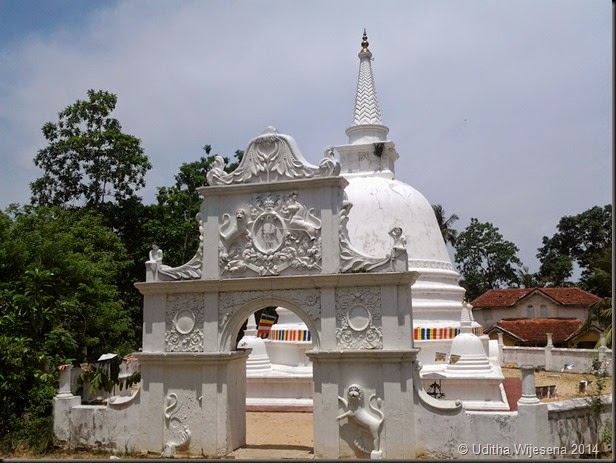 |
| The Chaithiya or Stupa has an arched entrance pandal with the British insignia. The four corners of the foundation podium of the main stupa has four smaller stupas. |
|
Wilson, our like-minded pal who has been here before guided us to the location. My wife Hemamala was more on a pious mind-set on this thrice blessed day, was ready with fresh flowers picked from the garden and the maiden bloom…a Golden Trumpet from her newly planted ‘Ruk-attana’ creeper[Allamanda cathartica] was offered at this old shrine.
 |
Belfry done on 1908
|
Shrines set into the stupa
Religious observances completed we explore the paintings on the outer walls of the ancient shrine room.
The image house building that do not show alienation to the Kandian era, unlike the paintings, is founded about a meter and a half above ground possibly to counter termite attack, shows relation to the technique of the Tam-pita Vihara buildings of the Kandian era that were founded on thick solid timber frames placed on large boulders on ground to defend termite intrusion.
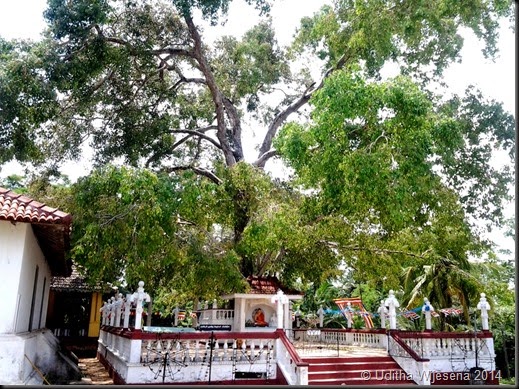 |
| The Bodhigara is a totally modern day structure |
|
 |
| The building does not resemble Kandian Architecture and is founded high above the ground |
Seven doorways provide access to the outer chamber. Two each on three walls and one on the front wall which is the main entrance. The main door leads to the two openings that provide access to the inner chamber. The inner chamber has one other side exit leading to the two doorways on the sidewall. Three windows provide light to the otherwise dark outer chamber. The inner chamber which is the shrine room has no windows. All the doors and windows show relation to Dutch architecture.
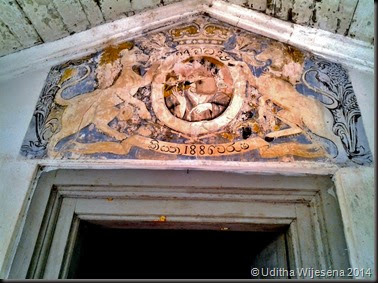 |
The main doorway to colonial grandeur
|
The mural above the main door-head is done to British colonial grandeur and says the year is 1886 AD. However close observation reveal the temple is much older. It could be that the inner chamber or the shrine room which is more in relation to the Kandian era may have been added with the outer chamber in 1886. This outer chamber shows Dutch influence in architecture while the murals on the walls show the British influence on the society.
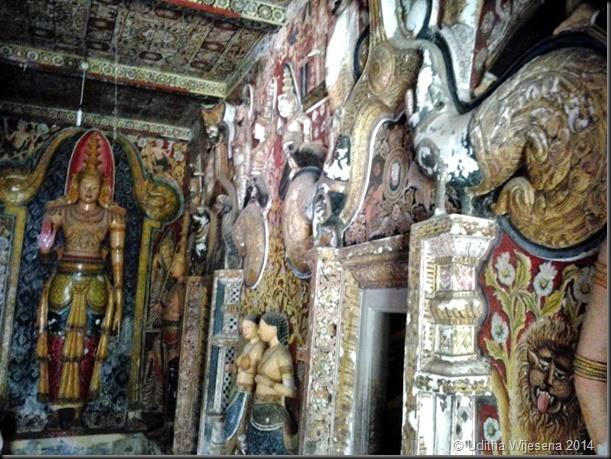 |
| The inner chamber resembles much Kandian style |
Doorways to the inner chamber with British insignia set in the Makara-thorana. The word Purwaramaya is written in English
The two main entrances to the inner chamber have the British insignia painted above and are set within the traditional makara-thorana. The main attraction inside the image house is a beautiful reclining Buddha showing links to Kandian sculpture and is larger in dimension to the standing image looking across a seated image that are positioned on the sidewalls. The general practice of locating the two chief disciples besides the Buddha has been avoided here.
A guardian image and images of Kinnara & Kinnari. Depicting the Sanda kinduru jataka
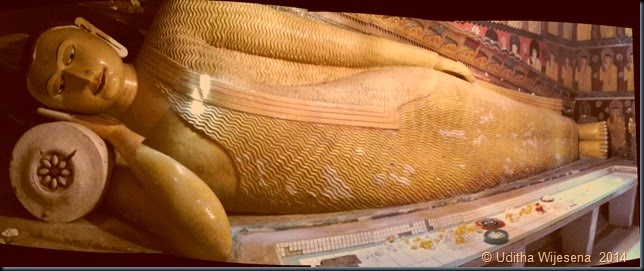 |
| The beautiful reclining Buddha |
The standing Buddha and the Meditating Buddha face each other
The outer walls of the inner chamber is different to those seen elsewhere. The three sides besides the one with the entrances has the 28 images [Atavisi] of the previous Buddha mounted in line and are enclosed within a large glazed polished timber cabinet spanning the length of the walls. This is a special feature not generally seen during the Kandian era. This could be an addition to the outer chamber that was incorporated later. Polished timber outfits were not common in the Kandian era then. The floor of the outer chamber is laid with terracotta paving showing its age with the immense foot traffic it had had to cope with.
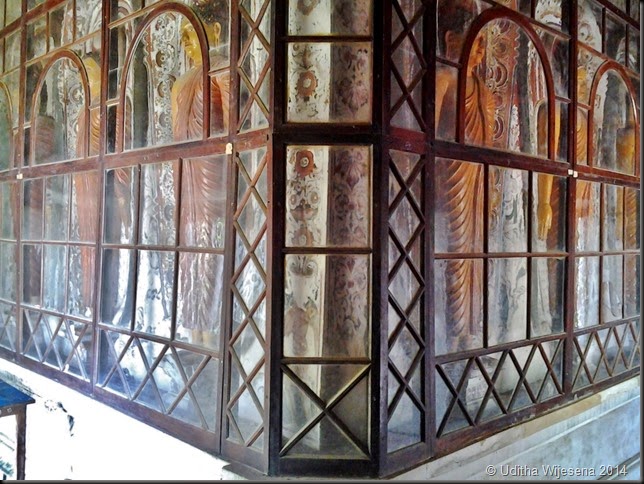 |
| The Atavisi Buddha images |
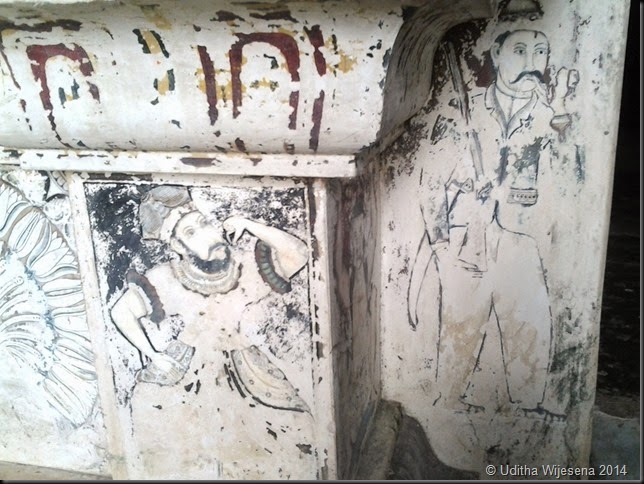 |
| The doratupala rupa or the guards at the doorway show British soldiers instead of the traditional guard stones. Sri Wickrama Rajasinghe the last King is drawn smaller than the soldier probably showing the hold the British had on the society. |
The temple and the murals have survived a timeline of 128 year to date. However its future wellbeing is very bleak and is of concern. As already seen… the doors have come off the hinges. Lighting of oil lamps and josticks within for fragrance will cause damage to the vegetable dyes and colours in the murals. Ground salinity with dampness is affecting the lower most murals and have faded them off completely. The murals around the windows are fading and have begun to scale. Stray mongrels are seen taking shelter within the chambers to nobodies concern. The contribution of the village community towards the temple is but shocking. This was evident with the fewness of floral offering on the altar on this most venerated day for the Buddhist…the Vesak?
 |
A traditional pageantry showing an insignia of Briton and colonial parasol
|
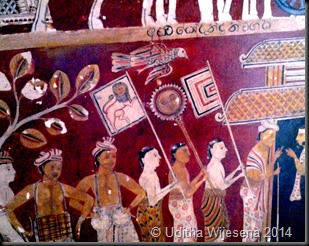 |
The lion flag in procession
|
 |
| Story of Patachara |
 |
| Note the Buddhas abode being illuminated with Dutch period lamps |
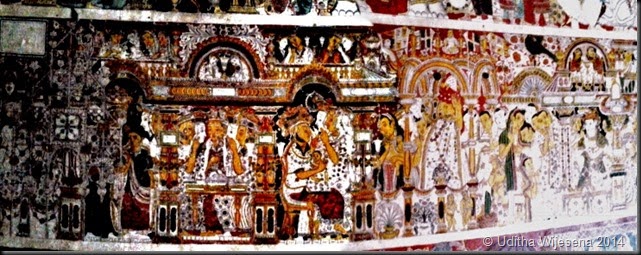 |
| Note the minute detailing of the paintings |
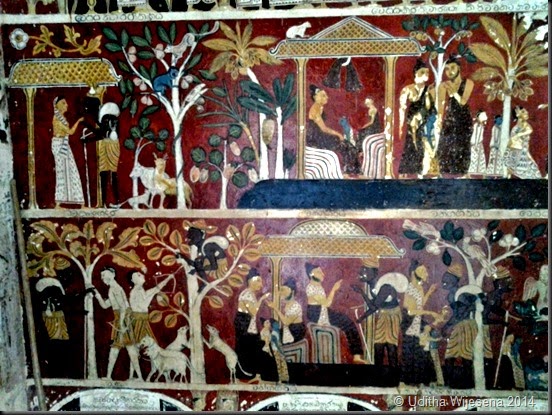 |
| Vesantharsa Jataka |
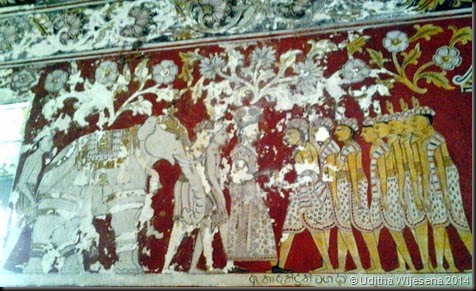 |
| Donating the Ele Etha [Albino Elephant] |
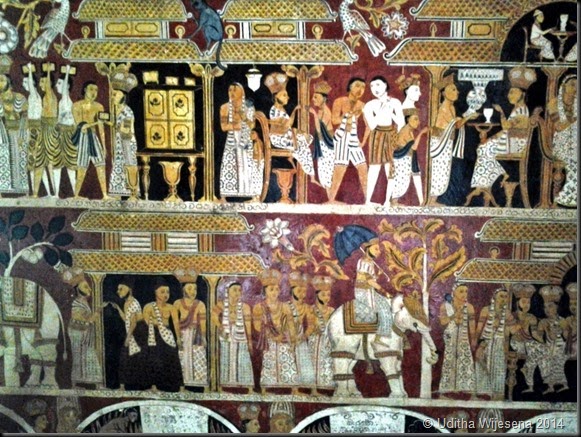 |
| A better preserved painting of the Vesanthara Jataka . Note the monkey on the roof. A problem then as now |
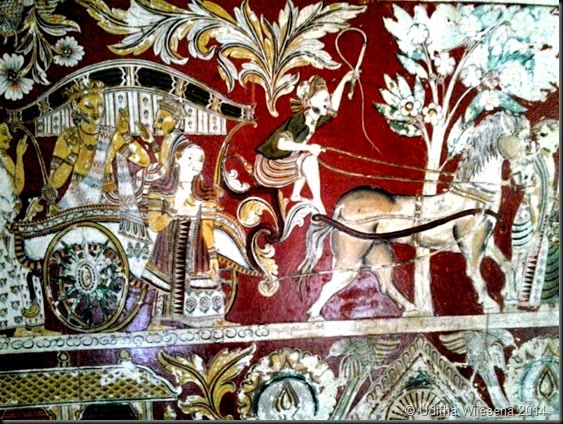 |
| The Victorian stagecoach the mode of conveyance of the elite |
 |
| Bullock carts and the thirikkala the mode of conveyance of the peasantry. |
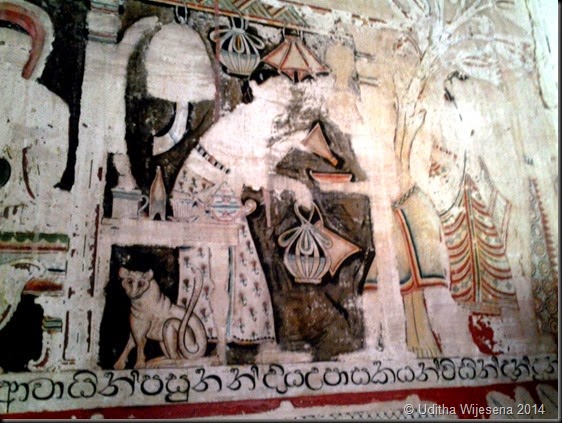 |
Note the glass bottle with the dented bottom and the household pets
|
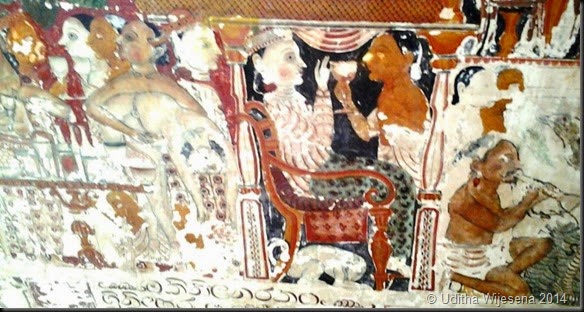 |
Note the wine served in stemmed glasses
|
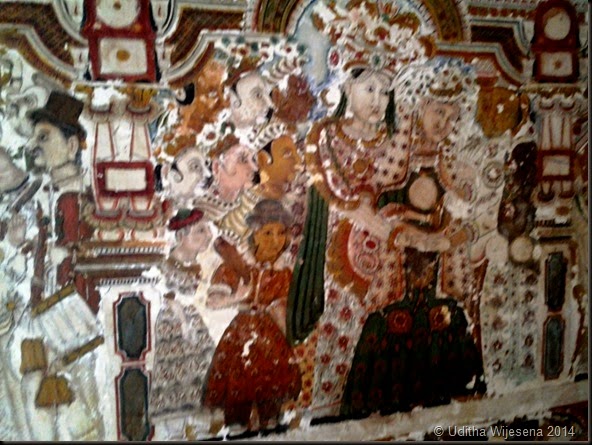 |
| Women and children in Victorian gowns |
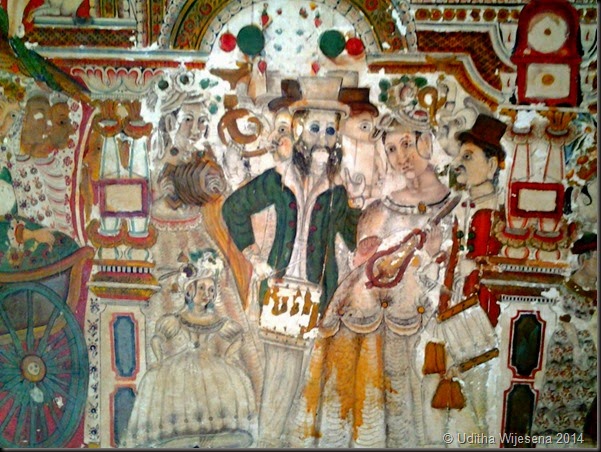 |
| British social gatherings of revelry with drums and harps. Note the gent in tinted eyeglasses. |
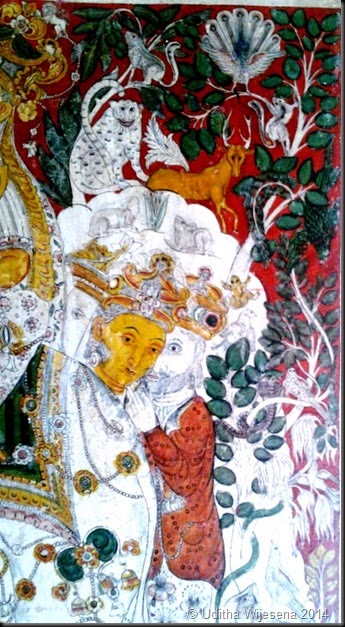 |
Royalty shown in British attire. Note the background is filled will nature
|
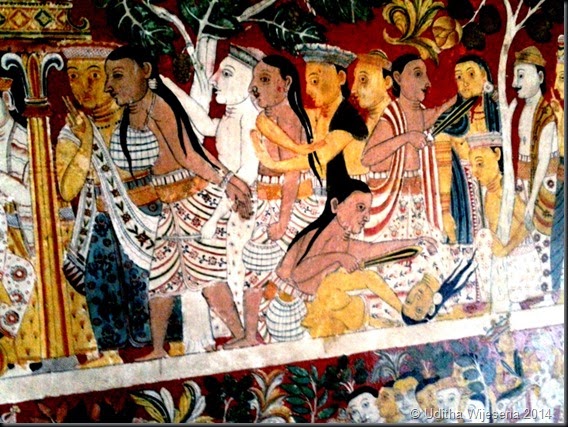 |
| Topless women shown wearing bibs to avoid obscenity |
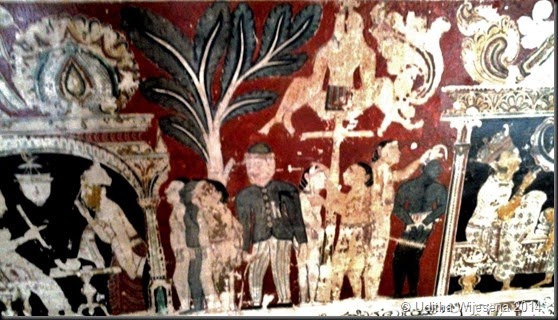 |
| Scene of hell the Satan wearing western attire |
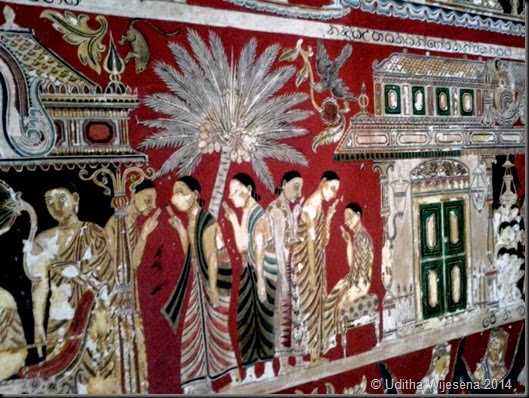 |
| The coconut palm native to the area |
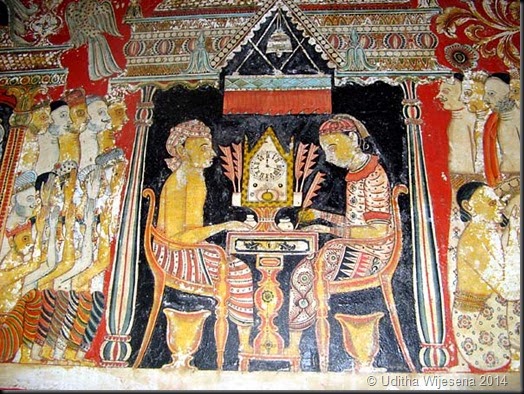 |
Note the clock with roman numerals
|
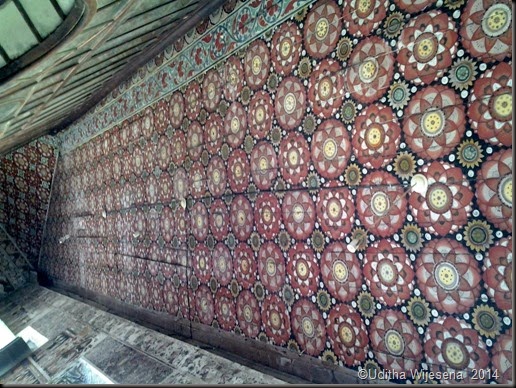 |
| The ceiling motif |
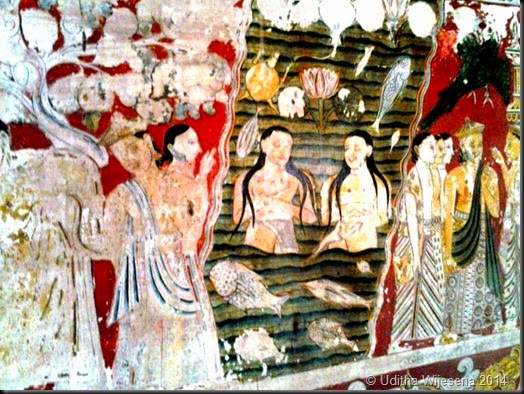 |
| Rivers are drawn flowing upwards in the Kandian style. Note the type of fish and the turtle native to the coastal habitat. |
|
|
|
|
Hemamala and Wilson with the author
On the way back we glimpsed into the Ranwella temple in Giniwella. This temple too has an octagonal image house with the outer walls done with murals to the same style but in recent times. The doors and windows have Gothic features as those in the christian churches.
 |
| Gothic windows |
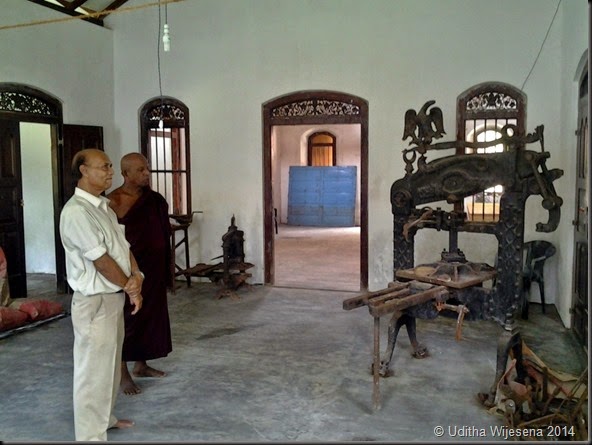 |
| The remains of the press after the fire |
What is significant here is the old printing press donated by the King Chulalongkorn of Siam in 1860 [locally pronounced Chulalankara] on the request of Ven. Bulathgama Dhammalankara Siri Sumanatissa Thera, the chief incumbent at the Paramananda temple in Minuwangoda, Galle; who felt the need of a Sinhala newspaper then
The first Sri Lankan newspaper being ‘Lakmini Pahana’ printed in 1862 was in fact after the ‘Lanka Lokaya’ that was published two years before on this machine, but it was not registered as a newspaper.
It is said the press was of immense service during the Panadura wadaya when all of the information about it was printed on this press.
The press was closely guarded by the monks at the Ranwella temple for nearly 140 years, until a fire destroyed the monastery building in November 2012 bring in destruction to the artifact. The metal braved the blaze but for the timber components, the letter-sets and other.
































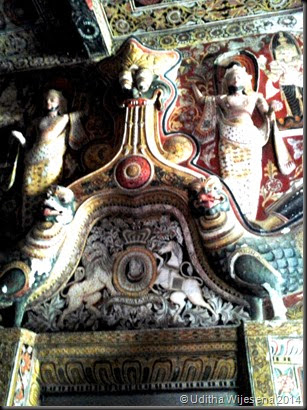
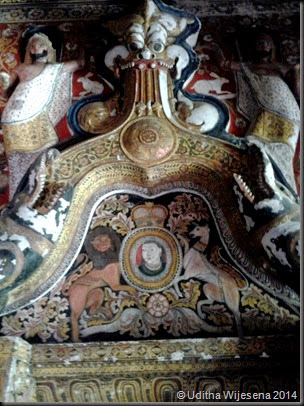


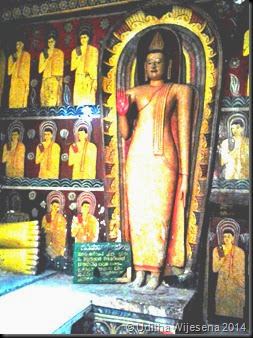
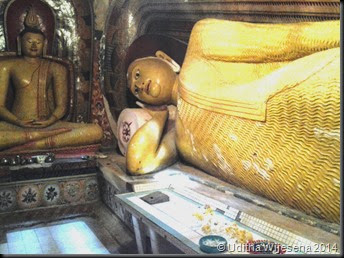




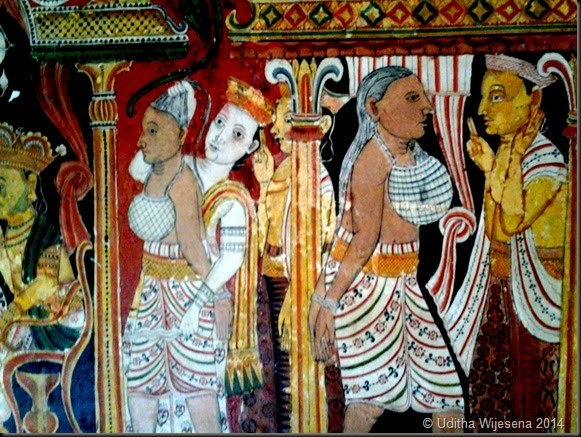
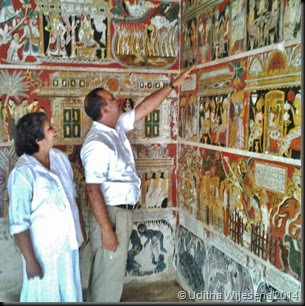
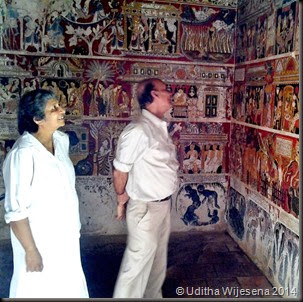
Dakunulaka ,koggala,kathuwa,thibena poorwaraama vihaaraya itha watina pansalaki.Naarilatha bithusithuwam eya wadaath theewra karayi.puraawidyaathmaka athin mahangu watinaakamak etha.Eya manaawa reka gatha yuthuyi.
ReplyDelete